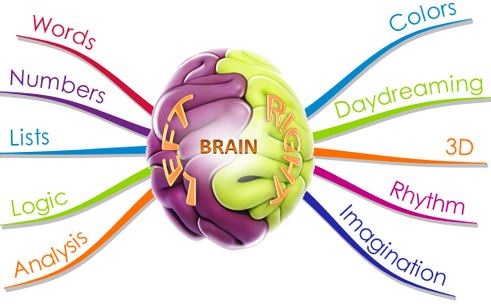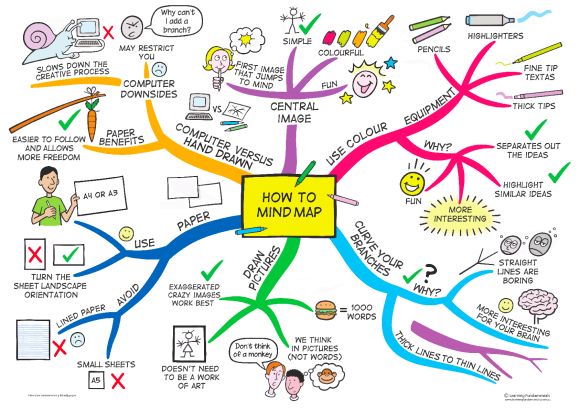Published – 15 August 2017 By Gavin Beever
Mind mapping is a useful and simple tool for brainstorming a concept or issue as an individual or with a group. As a group extension tool, it is great for getting out all thoughts and ideas around a subject area and then developing linkages and themes between and around them.
The process mimics how the human brain functions and collects thoughts in a radiant rather than linear fashion. This helps gather individual and collective thought quickly and associations and connections are easily identified; the process triggers or sets off further thoughts and ideas as the mind map emerges, until all thinking is exhausted and collected onto the mind map.

Source: (Chris, M. 2015)
The output is a diagram that visually represents the thoughts around a subject area, concept or idea in a radiant rather than linear manner. It can collect a lot of thinking and information in the one diagram, often a lot more efficiently than if all of the thoughts had been written down as text.

Source: Inspiring world map design
Mind maps can be revisited over time and used as part of an action learning or continuous improvement process. Thinking can develop exponentially, either by continuing the branches or by an element of one mind map becoming the core concept for a new mind map.
Different colours, symbols, pictures, text and diagrams can be used to broaden thought collection and download a rich picture of data and information to explore around the central concept.
A downside to mind mapping is that it can be hard for a person to fully understand what a mind map is portraying, if they did not participate in the mind mapping process or without an explanation from someone who did.
Tony Buzan, a British psychologist starting popularising the technique in the 1960’s and 1970’s. A short video on how to mind map by Tony Buzan can be found here.
A quick guide to mind mapping:
- Start with a blank piece of paper.
- Place a word or image in the centre of the page that represents the subject to be explored.
- Radiating out from the central subject, draw out a short wavy line with one word, symbol or image on it that represents a key primary thought around the core subject.
- From those primary thoughts, draw out further lines that collect the thoughts that are triggered around each primary thought.
- The thinking then expands as each thought triggers further thinking and the diagram branches and radiates out further.
- Continue building the mind map until the group has provided enough collective thinking to capture their major thoughts.
- Linkages and associations between thoughts on the branches can then be identified and joined together by drawing linking lines. By doing this, themes can emerge and/or the thinking condensed and further rationalised.
- The map can be used for a variety of purposes: Summarising the thinking, identifying tasks or actions, identifying priorities, recording the output, providing the basis for further thinking and engagement, to assist with decision making, for strategic planning or for presenting to others.
S. Jain (2015) found that mind mapping improves recall when compared to other more traditional methods such as note taking and is an excellent tool for collaborating with others to develop plans or implement key projects.
Content sources and further information

